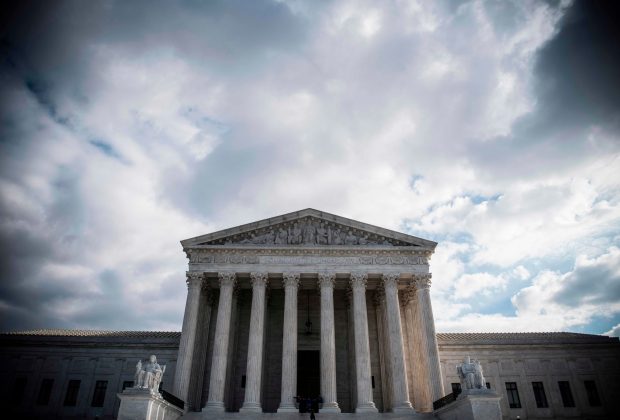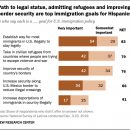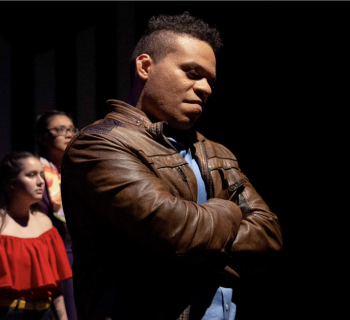A summary decision kicks an untold number of legal immigrants off the path to citizenship…
By Linda Greenhouse, Opinion Writer for The New York Times ~ Feb. 13, 2020
The Freudian concept of psychological projection refers to the behavior of people who, unable to acknowledge their own weaknesses, ascribe those same failings to others. President Trump provides a striking example in his multiple post-impeachment rants calling those who sought his removal “vicious” and “mean.” His choice of the word “mean” caught my attention, because I’ve been thinking for some time now that the United States has become a mean country.
There has been meanness, and worse, in the world, of course, long before there was a President Trump. But it doesn’t require suffering from the agitation of Trump derangement syndrome to observe that something toxic has been let loose during these past three years.
Much of it has to do with immigration: the separation of families at the border and the effort to terminate DACA, the program that protects from deportation undocumented young people brought to the United States as children. Removing this protection for hundreds of thousands of productive “Dreamers,” now pursuing higher education or holding jobs (or both), is an obvious lose-lose proposition for the country. It is also simply mean.
And the meanness radiates out from Washington. The mayor of Springfield, Mass., one of the biggest cities in one of the bluest states, has taken the president up on his offer to let local officials veto the resettlement of refugees in their communities. Tennessee enacted a law to cut off state money to cities that declare themselves “sanctuaries” from federal immigration enforcement. (At the same time more than a dozen counties in Tennessee have endorsed a growing “Second Amendment sanctuary” movement for gun rights.)
The meanness spreads to the lowest ranks of the country’s judiciary. USA Today reported two weeks ago that a common pleas judge in Hamilton County, Ohio, has adopted the practice of summoning ICE whenever he has a “hunch” that the defendant standing before him is an undocumented immigrant. “I’m batting a thousand. I haven’t got one wrong yet,” Judge Robert Ruehlman boasted.
In the Arizona desert, where thousands of border-crossing migrants have died from exposure and dehydration in the past decade, Border Patrol agents have been filmed kicking over and emptying bottles of water left for the migrants by volunteers. (This practice evidently preceded the Trump administration; the Border Patrol, in its union’s first-ever presidential endorsement, endorsed Mr. Trump’s candidacy in 2016, deeming him “the only candidate who actually threatens the established powers that have betrayed our country.” )
The United States attorney’s office in Tucson has been prosecuting people who enter the Cabeza Prieta National Wildlife Refuge without a permit to leave lifesaving bottles of water and cans of food along common migratory routes. In 2018, a federal magistrate judge, in a nonjury trial, convicted four people for illegal entry and abandoning property in the desert wilderness. The four are volunteers for No More Deaths/No Más Muertes, a ministry of the Unitarian Universalist Church of Tucson.
In their appeal before a federal district judge, Rosemary Márquez, the four invoked the Religious Freedom Restoration Act, arguing that their actions were driven by their faith and their belief in the “sanctity of human life.” The government responded that the four had simply “recited” religious beliefs “for the purpose of draping religious garb over their political activity.” (I’m not holding my breath for the Trump administration to similarly ridicule the religious claims of employers who say they can’t possibly include the birth-control coverage in their employee health plans, as the Affordable Care Act requires, lest they become complicit in the sin of contraception.)
The administration met its match in Judge Márquez. On Jan. 31, finding that the Religious Freedom Restoration Act barred the prosecution, she overturned the convictions. Her 21-page opinion noted that human remains were regularly found in the area, and she had this to say about that fact:
“The government seems to rely on a deterrence theory, reasoning that preventing clean water and food from being placed on the refuge would increase the risk of death or extreme illness for those seeking to cross unlawfully, which in turn would discourage or deter people from attempting to enter without authorization. In other words, the government claims a compelling interest in preventing defendants from interfering with a border enforcement strategy of deterrence by death. This gruesome logic is profoundly disturbing.”
The headline on this column promises some thoughts about the Supreme Court, so I’ll now turn to the court. The country’s attention was focused elsewhere two weeks ago when five justices gave the Trump administration precisely what it needed to put into effect one of the most mean-spirited and unjustified of all its recent immigration policies. This was the radical expansion of the “public charge” rule, which bars from admission or permanent residency an immigrant who is “likely at any time to become a public charge.”
The concept of “public charge” in itself is nothing new. It was part of the country’s early efforts to control immigration in the late 19th century, where it was used to exclude those likely to end up in the poor house or its equivalent. That historic definition — “primarily dependent on the government for cash assistance or on long-term institutionalization” — was codified in 1999 “field guidance” issued to federal immigration officers.
Last August, the administration put a new definition in place. Any immigrant who receives the equivalent of 12 months of federal benefits within a three-year period will be deemed a public charge, ineligible for permanent residency or a path to citizenship. The designated benefits include nutrition assistance for a child under the SNAP program; receipt of a Section 8 housing voucher or residence in public housing; and medical treatment under Medicaid. The new rule, titled Inadmissibility on Public Charge Grounds, aggregates the benefits — that is, three of the benefits received in a single month count as three months of the 12.
States, cities, and nonprofit organizations around the country promptly filed lawsuits, with varying preliminary outcomes. The plaintiffs argued that the drastic change in definition was “arbitrary and capricious,” violating the Administrative Procedure Act’s core requirement of “reasoned decision making.”
In October, a federal district judge in New York, George Daniels, ruled in favor of two sets of plaintiffs, one group headed by New York State and the other, a coalition of nonprofit organizations. Judge Daniels noted that the government was “afforded numerous opportunities to articulate a rational basis for equating public charge with receipt of benefits for 12 months within a 36-month period, particularly when this has never been the rule,” but that its lawyers “failed each and every time.” He explained that “where an agency action changes prior policy, the agency need not demonstrate that the reasons for the new policy are better than the reasons for the old one. It must, however, show that there are good reasons for the new policy.”
And Judge Daniels added: “The rule is simply a new agency policy of exclusion in search of a justification. It is repugnant to the American dream of the opportunity for prosperity and success through hard work and upward mobility.” Noting that the policy would immediately cause “significant hardship” to “hundreds of thousands of individuals who were previously eligible for admission and permanent residence in the United States,” he issued a nationwide injunction to block its implementation.
The United States Court of Appeals for the Second Circuit put the government’s appeal on a fast track but refused, in the interim, to grant a stay of the injunction. So, predictably, the administration turned to its friends at the Supreme Court and, equally predictably, got what it wanted. By a vote of 5 to 4, the court granted a stay of the injunction to last through a future Supreme Court appeal.
Granting a stay at this point was a breathtaking display of judicial activism. The Second Circuit will hear the case promptly; briefs are due on Friday. More to the point, the court’s summary action, without full appellate review, changes the lives of untold numbers of people for the worse, people who immigrated legally to the United States and who have followed every rule. Being kicked off the path to citizenship puts them directly on the path to deportation, without any explanation from the highest court in the land of why this should be the case.
Of the five justices in the majority — Chief Justice John Roberts and Justices Clarence Thomas, Samuel Alito, Neil Gorsuch and Brett Kavanaugh — only Justices Gorsuch and Thomas deigned to write anything. In a four-page concurring opinion, they made clear their determination to hold up this case, Department of Homeland Security v. New York, as an example of “the gamesmanship and chaos” that they said was attendant on “the rise of nationwide injunctions.”
I don’t remember such hand-wringing a few years back when anti-immigrant states found a friendly judge in South Texas to issue a nationwide injunction against President Barack Obama’s expansion of the DACA program to include parents of the “Dreamers.” The Supreme Court let that injunction stand.
Do the justices realize how they are being played? I started this column by mentioning psychological projection, a distorted view of others engendered by a distorted view of oneself. That’s Donald Trump, seeing himself the innocent victim of attacks from vicious and mean people. There’s another kind of projection, the image reflected when light strikes a mirror. Who do these five justices see when they look in their mental mirrors? Could it be Donald Trump?
Source: The New York Times
Linda Greenhouse, the winner of the 1998 Pulitzer Prize, writes on alternate Thursdays about the Supreme Court and the law. She reported on the Supreme Court for The Times from 1978 to 2008 and is the author of several books.







